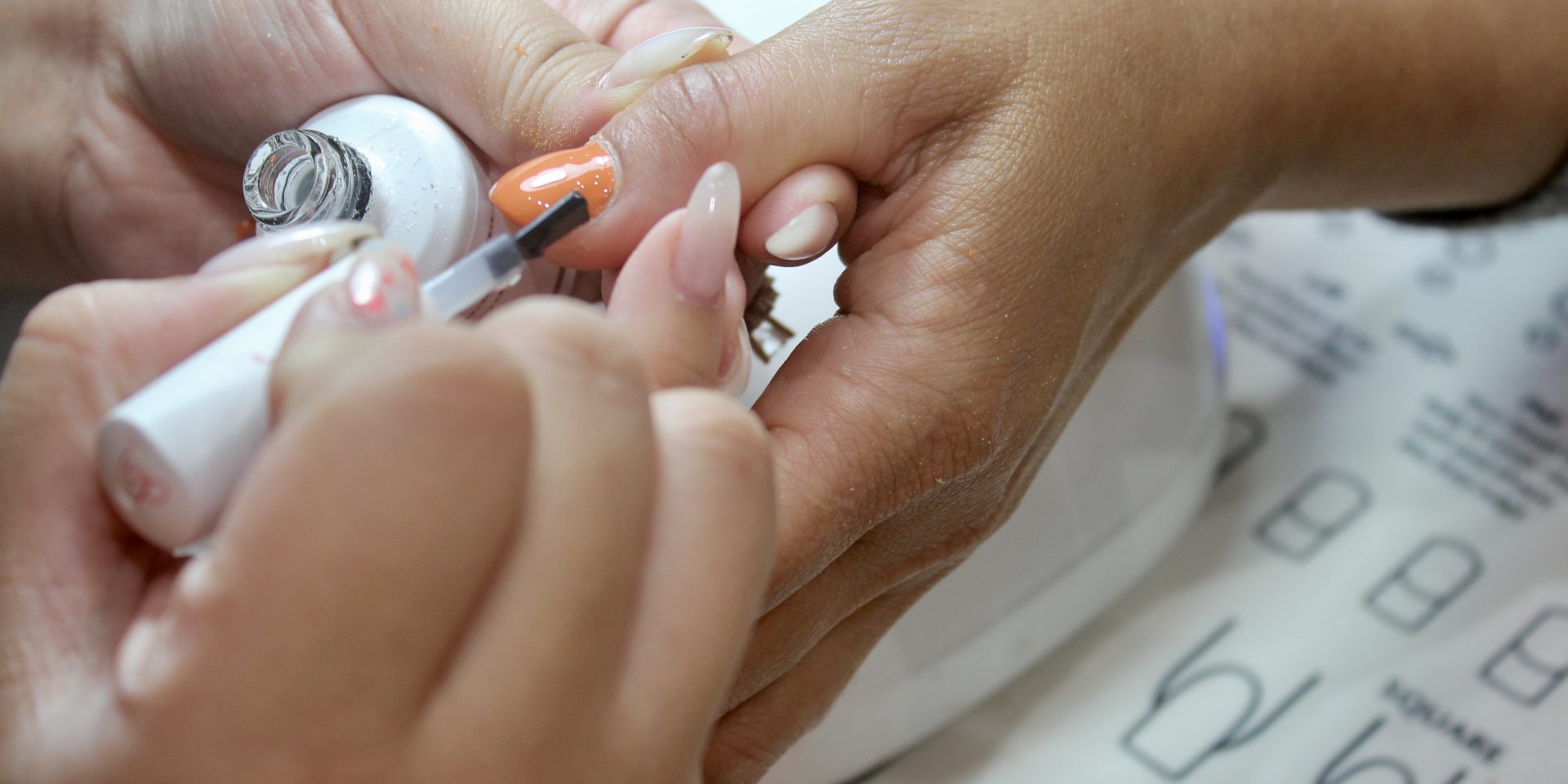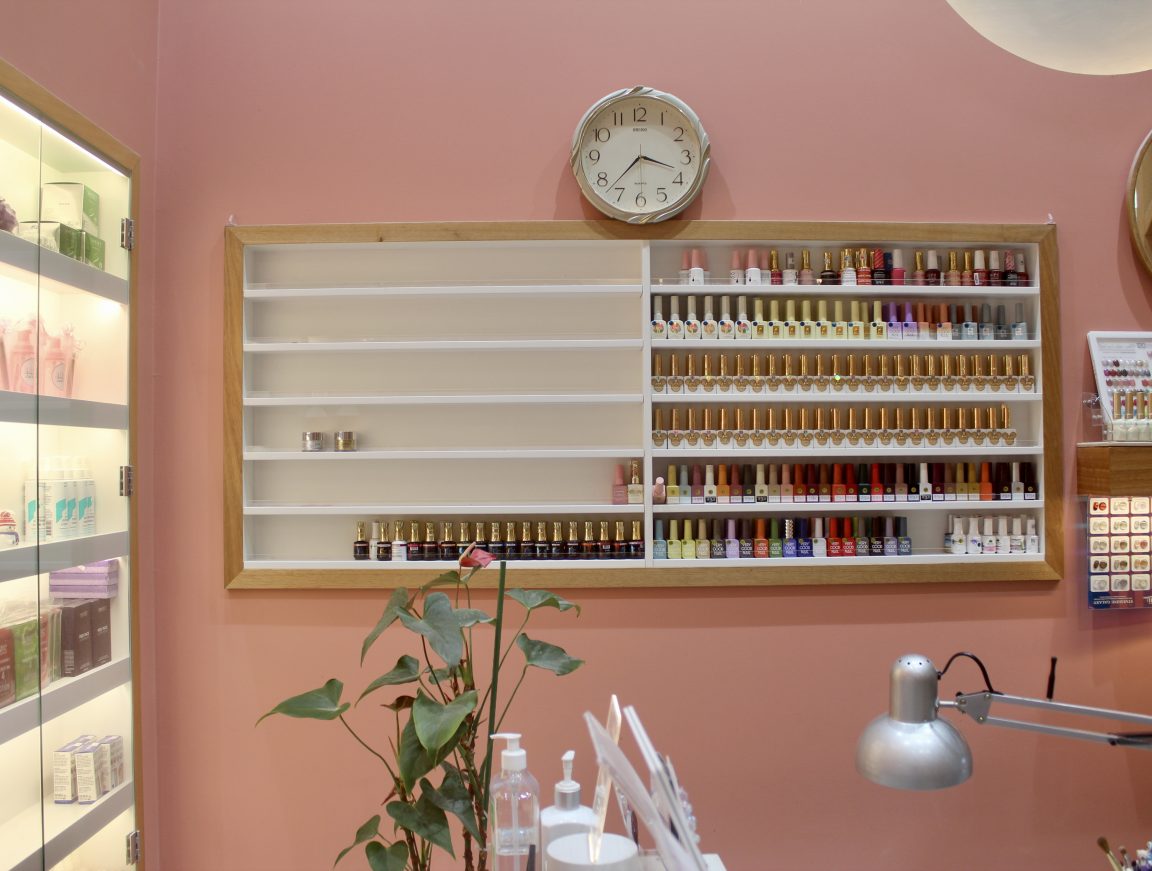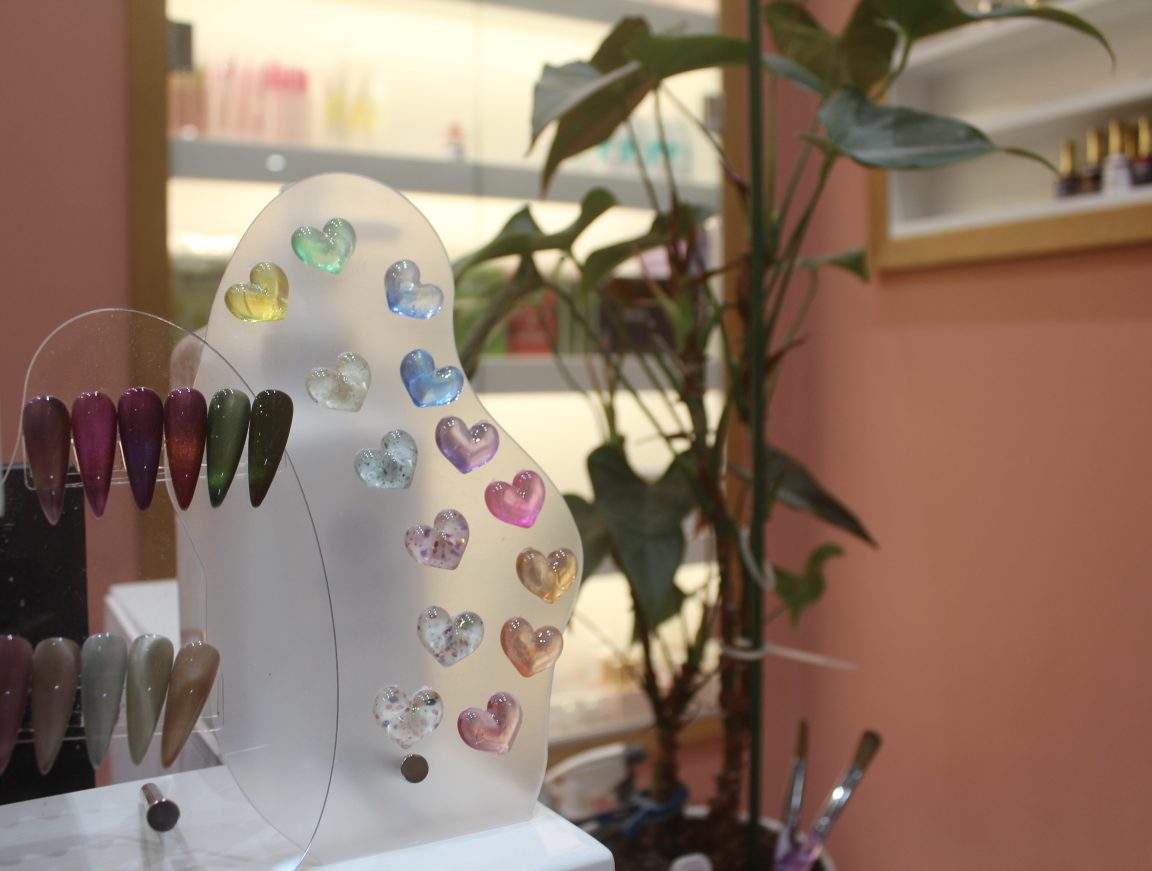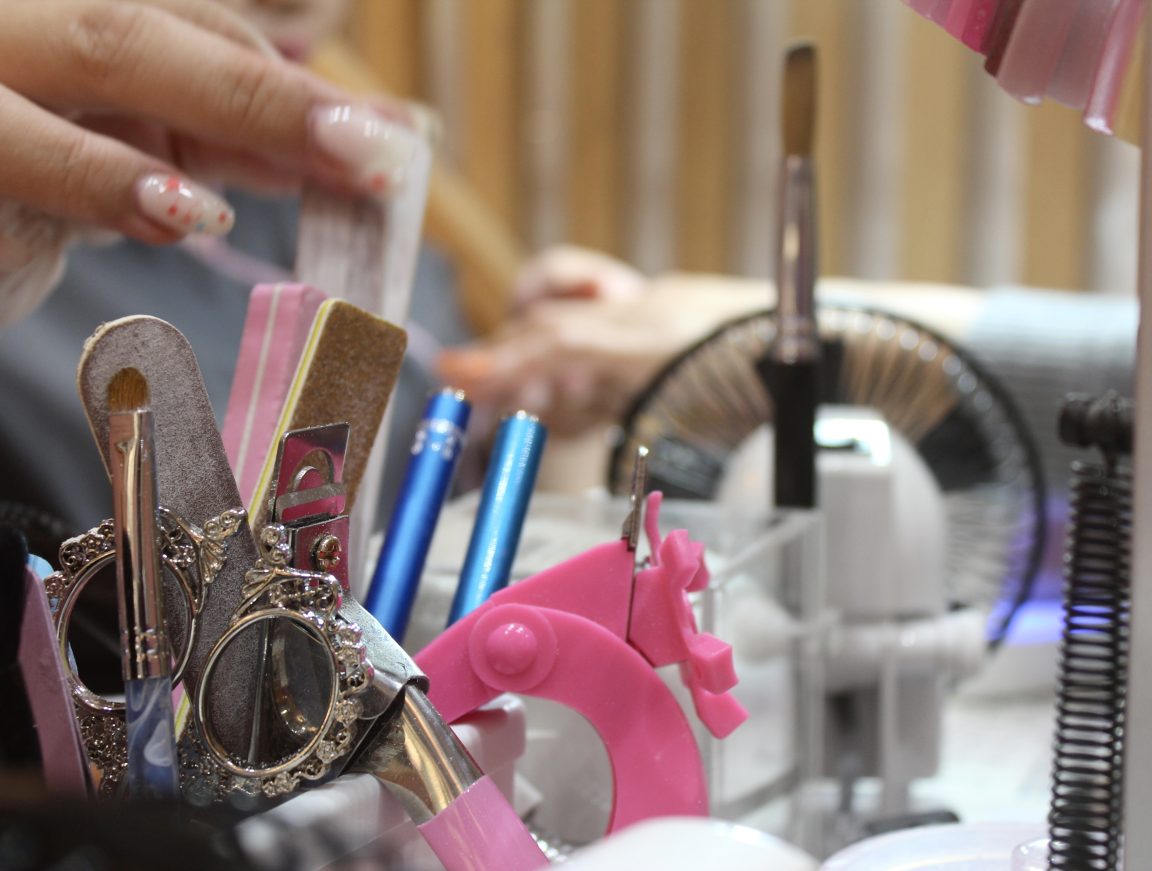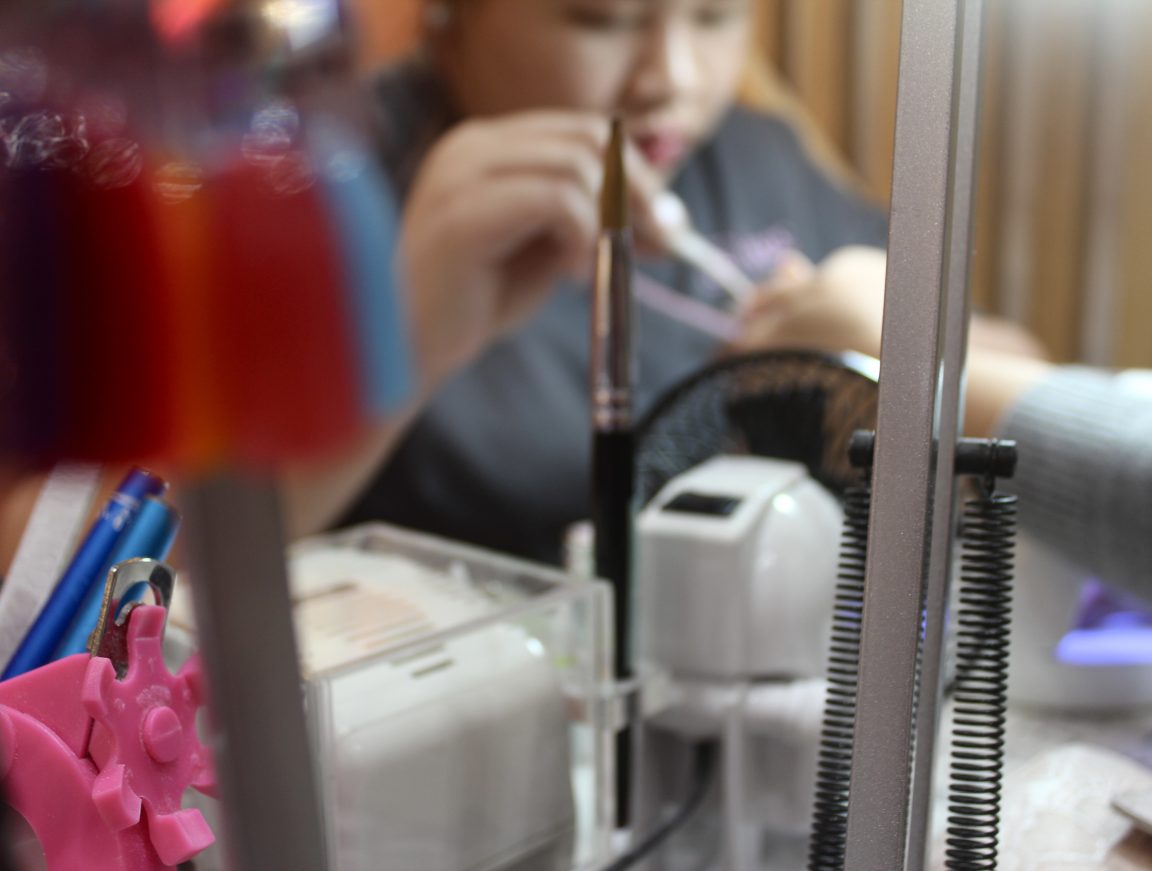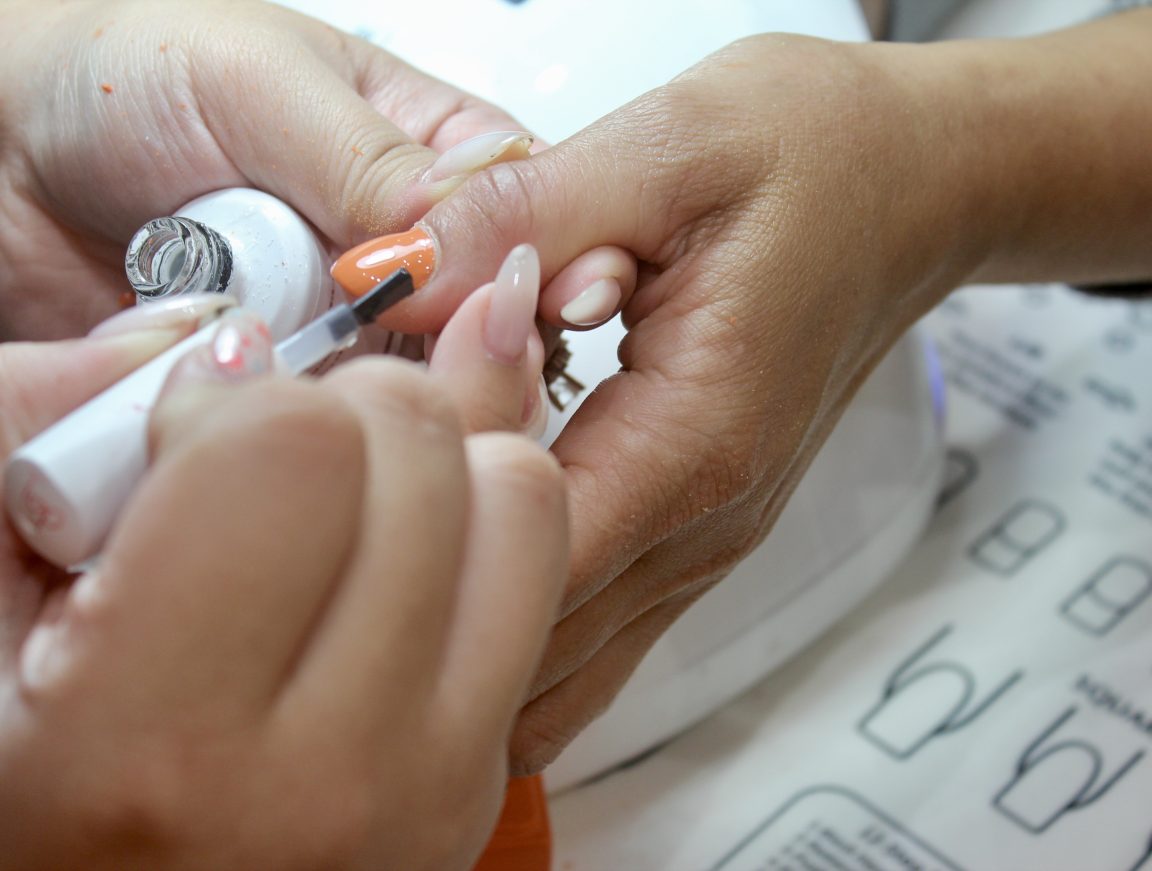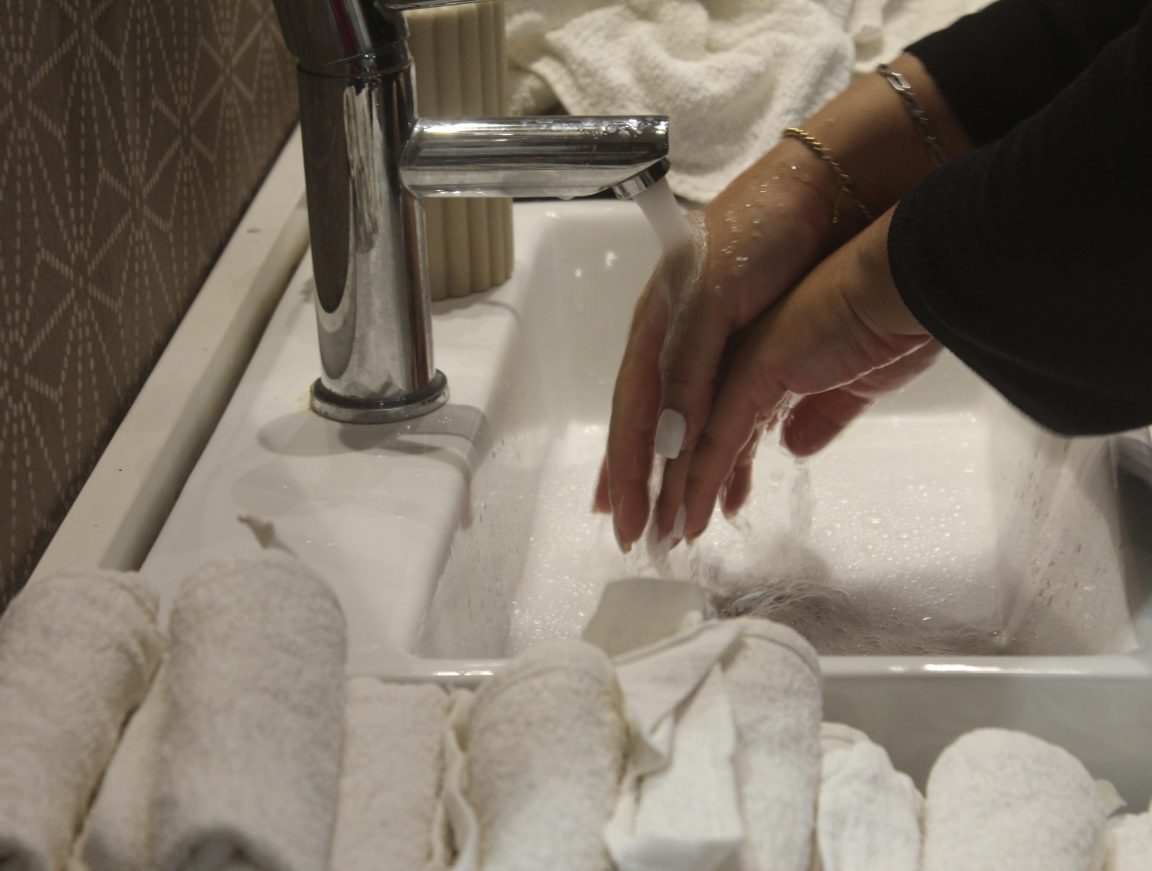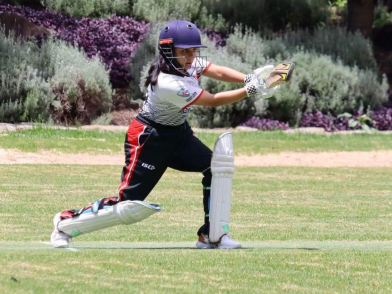“Take a seat,” a lady with soggy eyes and greying hair instructed. It was hard to hear her over the murmur of fans, running water and bland conversations.
I tried to hide my rolling eyes when I heard one middle-aged lady with a blonde bob lament, “Jonathan has Mrs Roberts for English this year, definitely not the teacher we’d asked for.” Soggy Eyes checked if I was actually inside, then immediately returned to her head-down position in front of an old desk fan.
The nail salon was brightly lit, stunning me. Take a seat, but where? Was I meant to sit straight on the manicure table and find an empty seat in the almost full row? Or did she mean I should take a seat on the leather chair, put my head back and my feet up? I wondered if my sister had the same doubts when she first came to get her nails done. I looked around the acetate-infused room. There were long parallel legs soaked in tubs, toes extended over the edge of plush reclining chairs, upright backs in sturdy seats, elbows and knees at 90-degree angles and fingers spaced apart. Suddenly noticing their faces, I saw all eyes on me. A high-pitched and soggy eyes repeated, “Take a seat!”
These nail technicians were busy. I felt the heat of my body rise to my face. My technician had to abruptly put down her brush, staining the table a sparkly purple, to show me where to sit down.
With the rising cost of living, I wondered how these nail technicians still attracted a waiting list of clients. Writing for the Sydney Morning Herald on the fate of the gel manicure, health and beauty journalist Alizon Izzo has claimed that “the tide is turning on what was once a non-negotiable beauty appointment for many Australians.” If overflowing salons were a sign of the tide turning, I needed to investigate — turning in which direction?
When I was growing up, my mum never got her nails done. My mother’s nails were oblong, trimmed and sometimes painted with a brown shade of Lakmé polish that was often dried out from her last trip to India. The first and only time Mum got her nails done was with my sister on a day out. I looked through the fourteen photos my sister had spammed on WhatsApp. Clumsy shoes. Ice-cream eating selfies. Blurry outfits. Shellac designs didn’t make the spam. Mum said after that, “I won’t get mine done beta, you go get yours. Mere wrinkled haath pe kya karwane he.”
The wrinkles reminded me how Dad’s parents only saw Mum as an extra pair of hands — hands that could absolve them of any responsibility now that their son was married. My paternal grandparents kept a tight rein on Mum’s movement by ordering three elaborate meals a day, for six people, seven days a week, over thirty years. Nail art was not meant for people whose hands were washing up, wiping down. I learnt hands that took care of other people could not be taken care of. Plus, a French manicure wouldn’t be visible under a top coat of turmeric, a stain deep yellow like terracotta.
Nail art was not meant for people whose hands were washing up, wiping down. Plus, a French manicure wouldn’t be visible under a top coat of turmeric, a stain deep yellow like terracotta.
Tippi Hendren is known as the The Godmother of the Vietnamese nail industry, according to the Vietnamese Heritage Museum in California. Vietnamese migrants make up 45 percent of nail technicians worldwide and 80 percent in California, where the industry originated.
After the fall of Saigon, the American actress, activist and model began working with Vietnamese women in refugee camps where she noticed their interest in her long, glossy nails. Tippi asked her manicurist at the time if she would come to the camp and teach nail technology to a group of 20 women every weekend, after which she helped them get jobs all over southern California. After that, more Vietnamese women around the world were taken “under the wing of someone else who had made it big within that nail technician space,” according to my Vietnamese Australian friend Michelle Dang. She was phoning me back as she walked to the gym from her apartment. “Actually, funny that you caught me at this time because on this day 49 years ago, my dad’s family was driving around in Saigon looking for an escape route out of Vietnam,” she said. I felt like ice cubes were rolling down my arm as I took notes. “Today’s the day that Saigon fell, North Vietnamese forces broke down the presidential gates. The US, Australia and allied troops pulled out and then from here, concentration camps and communism started.” Michelle’s parents came to Australia as refugees. “What I was getting at, sorry, was that it kind of becomes like this protege and I think there’s no formal training per se that these women have,” she said.
Michelle’s parents never worked in the nail industry but there is a protective instinct that is unleashed when she speaks. Michelle is concerned about the rise of Gen Z and millennial social media influencers setting up nail businesses from home and dominating a space that was traditionally reserved for Vietnamese migrants. “I think it’s when white girls get into it that I’m like, surely you have something else … maybe there’s an element of social media here as well, where if you know how to play the game, you can really dominate a market or disrupt it”. She was hesitant to define ‘white,’ but settled on “Anglo, Caucasian, no heritage of exploitation, colonialism… I don’t want to put hard and fast rules on it.”
I spent some time scrolling through Nailtok – TikTok reels about nails. The first video I saw was of a Kim Kardashian doppelgänger sharing her grievances about the industry. “I feel like there are the nail techs who have been doing this for longer and they’re just so arrogant. They will not clap for the new girls.” It’s unclear who she’s referring to when talking about the “nail techs who have been doing this for longer,” but given the statistics there is a high chance she was ignoring, or oblivious to the structural and systemic barriers that pushed Vietnamese women into this industry to begin with.
“You need to have a very, very light hand for the intricate details… like painting a flower. Big Vietnamese energy. These days it’s just like glue-on massive dazzle sh*t.”
I asked Michelle if she saw this profession as one that empowered her community. After a long pause she answered, “I don’t think it’s disempowering. Firstly, it’s a means of income which allows people to live lives. And I guess if you read into the history of it, it did come from a place of re-skilling women who had traditional homemaker roles to something from which they could make their own money.” She was quick to add “but it’s very laborious, very extracting, so maybe not so empowering in that sense.” Like myself, Michelle never saw women in her family or community get their nails done. “It was like a bit of a waste of money.”
Now as a young adult, when she does occasionally get her nails done, she says, “it’s probably a really bad day for me. And I’m trying to make it better.” For Michelle, one benefit of not being able to speak Vietnamese well is the ability to enjoy being a fly on the wall. “They chatter amongst themselves and I can understand everything they’re saying. They’re just talking about the kids and they’re talking about who’s recently come back from Vietnam.” I’m intrigued to learn how Michelle sees herself in relation to these technicians as a second-generation Vietnamese Australian woman, born at a better time, in a different place. Throughout our decade-long friendship, it’s something that’s never come up in conversation. “I don’t really know how to be in this space. Also, I think sometimes I’m a little bit embarrassed to make it known that I’m Vietnamese.” Is it because of the power dynamics at play? “No, because sometimes if I do make it known that I’m Vietnamese, they started to be like, ‘oh, do you want to meet my nephew?’” Aunties are aunties anywhere.
It’s a means of income which allows people to live lives. And I guess if you read into the history of it, it did come from a place of re-skilling women who had traditional homemaker roles to something from which they could make their own money.
Michelle always finds a silver lining, even it’s only the faintest of outlines. I wonder if she thinks about gender roles in the nail space. Male manicures are having their moment and in recent years, have rapidly gone from “niche to mainstream,” according to Sydney Morning Herald’s Damien Woolnough. Whether this can be attributed to gender-fluid fashion popularised by mainstream artists like Harry Styles, or a general defiance of gender norms, there has been a rise in males getting manicures, wearing polish and having nail treatments. This challenging of gender roles however, is not reflected in the composition of technicians in salons.
Michelle says , “even though lot of men are very apt at nails, I think the more predominant image of a nail tech is a female.” Of Vietnamese men she believes, “some are trained, or just grew up with mothers who did it,” but the level of artistry involved in traditional nail art requires a sensibility that’s more often possessed by women. “You need to have a very, very light hand for the intricate details… like painting a flower. Big Vietnamese energy.” I can hear her smile through the phone. She distinguishes these delicate brush strokes from what’s trendy right now. “These days it’s just like glue-on massive dazzle sh*t.”
Back in the salon, it was so obvious that it was my first time.
“Oh, that’s from trauma,” I felt compelled to explain. “A trauma injury from tight school shoes.”
I had one foot in the bath and the other foot out. My big toenails have been operated on twice but my injury is still prominent. The lady chiselling my toenails seemed around my age and quizzed me on my background. It was rapid-fire, and I was in the hot seat. She gripped her tools tightly as she worked her way through each of my toenails, metal objects that could easily be seen on a dental tray, with their precise hooks and sharp blades. I felt the roughness of the towel against the soft, wet, cave-like crevices between my toes. Slipping on my thongs, I walked to the manicure table.
Nancy Nguyen started as a nail technician in Australia in 2002, five years after she first arrived as a student. Now the owner of a franchise, she is aware of the changes taking place in the industry. Nancy feels no resentment towards emerging nail technicians who have set up their businesses at home. “I think they have a right to do that. If you go to the shopping centre you pay a lot of rent, to set up a business you have to spend a lot of money.” About half of her employees are trained nail technicians from Vietnam and Nancy trains the other half in her salon. She tells me that her business has dropped by 50 percent after COVID, with more people working from home. However, being situated in North Sydney she has still been able to sustain herself in a suburb dominated by offices and working professionals. Despite this drop in revenue, she is emphatic that her staff’s wages have not been affected, “Otherwise they can stop.” What are their current wages? “I don’t want to talk about it. But it’s very high,” said Nancy. Of the 30 salons I called up after speaking to Nancy, no employees were willing and /or able to disclose their wage.
I can’t stop thinking about Michelle describing the act of getting her nails done as a “waste of money.” Despite her passion for supporting the wages of these Vietnamese nail technicians, it’s not something she’s willing to spend on. But who can blame her with the current cost of living?
Victoria Houllis is a small business owner who operates under the better-known name of Mannequin Hands. For over a decade, she has run her salon from home and has a following of over 30,000 people on Instagram. From a quick Google of her name, I see she has been described as a cult-status nail artist. Victoria says, “My books have been closed for quite a while.” On average, Victoria charges $150 per client, approximately five times the cost of a manicure at a shopping centre. She says of shopping centre salons, “From a business perspective alone, the chances of being profitable with how little people are paying for those services is impossible. And so, I would say there is a lot to answer for there, but I also think the responsibility here relies on the ACCC where it’s become normalised to not pay much for services.”
Victoria is a second-generation Greek Australian millennial who grew up seeing the women around her prioritise nail treatments. “My mum and my aunty used to get their nails done with a woman who would come to our house. It’s interesting too, because my mum is definitely not a particularly beauty-focused woman. She doesn’t necessarily wear a lot of makeup, but she still has always had her nails done.” Victoria doesn’t believe that either COVID or the cost-of-living crisis has seen a significant drop in her number of clients. Rather, people have spread their appointments further apart or simplified their designs to save money. Victoria compares people’s dedication to nail treatments to lipsticks after World War II. “Not a theory, but they kind of had this idea that lipstick sales spiked because it was all people could afford to cheer themselves up.”
…lipstick sales spiked because it was all people could afford to cheer themselves up.
Victoria
Victoria operates out of St Peters, Sydney. She estimates that 70 percent of her clients are from either first- or second-generation migrant families. I dig deeper to investigate if there’s anything else that might be attracting her diverse clientele. Victoria has wholeheartedly embraced creativity, from the chipped-nails look that reminds her of “the cracked Y2K style polish we all had back in high school” to politically inspired press-ons. “I have done definitely a lot of pro-Palestine nails. And when it comes to Mardi Gras, it’s definitely a lot of flags that are identifying everyone’s different attachment to queerness.” In Victoria’s 10 years of experience, she finds: “There is still a tendency for POC [people of colour] clients to be more political with their nail art than anyone else.” But politics is not just watermelon and rainbow nails. It can also be, as Michelle said, “dominating a market or disrupting it” when that market has been historically dominated by a particular migrant group. Victoria sees this as a “fair concern” given the increase in the number of home-businesses, but she is confident that “those [salon] jobs will never go because there’s always a call in Australia for people to want to find as much bang for their buck as possible. Especially with the way the economy’s going…people will never turn their nose down at having a cheaper and faster service, not in this country at least.”
Lillian Robillo, better known by her business name LilytheNailsLady, took to nail art as a way to secretly make money on the side while her ex-husband was at work.
As a single Filipino mother of five living in Western Sydney, Lily started professionally in 2017, straight out of nail school. Having immigrated from the Philippines in 2004 at the age of 24, Lily wasn’t familiar with the Vietnamese history that was intertwined with nail art. Lily has “forever been a fan of getting [her] nails done” and going to salons in Sydney taught her about the women doing her nails. “Some of the ladies would actually tell me what their background was and why they’re doing nails. To put themselves through school, or sometimes the owners of the salon would bring them over from Vietnam or Cambodia and they learn as they go.”
Lily endured a lot in the early years. The smell of the chemicals made her very dizzy and the dust affected her to the extent that she developed an upper respiratory infection. Just as Lily was about to quit for health reasons, a safe, odourless alternative came out. Gel extensions offered a refuge from the toxicity of the monomer. However, the turning point in Lily’s career was when she was offered a job with Victoria from Mannequin Hands. “I actually cried when [Victoria] asked me to work for her because she had been my nail idol/mentor for years.” Lily tells me that attaching her name to Mannequin Hands not only doubled her income because people started taking her more seriously, but she now feels equipped with the knowledge of what it takes to build a successful beauty business. Lily’s new clients also include “other nail artists [who] sometimes would come because they want to ask what it’s like working for Mannequin Hands. She’s a big deal.”
Gate-keeping is a recurrent complaint of people in this industry. Kimmy K’s doppelgänger brought it up in her TikTok reel. Lily also tells me: “If you ask [some independent nail businesses] how did you achieve that certain style of art, they won’t tell you or they say can’t remember if you ask them where they got the supplies.” What made Lily’s experience of working for Mannequin Hands even more special was knowing that: “Victoria has always been so helpful. Vic will always help you to problem solve if you’re not happy with your work. She’ll give you pointers on how you can improve next time.”
When I think back to the nail salon where Soggy Eyes had to tell me where to sit, I feel a knot in my gut. If only I had known what I know now about the space, I would have gone to someone like Lily who established her nail business as a way out of a toxic marriage. Or Victoria, who supports people like Lily. Perhaps I would have refused having my trauma-ridden toenails painted over by the shopping centre nail tech whose wage is not even one-fifth of what her skills merit.
My phone pinged. It was my best friend. “Hahaah actually yes I remember my first time being so confusing. There’s like an unspoken system that everyone just gets haha” she said.
This story was supported by Diversity Arts Australia’s StoryCasters program in partnership with The New Point Magazine. The views expressed within this story do not necessarily reflect the views of Multicultural NSW.
Explore other topics —

